Every year the World Migratory Bird Day is celebrated, this global awareness campaign takes place on the second Saturday of May, in its spring edition, and on the second Saturday of October, in its autumn one.
On these dates people from all over the world get active offering events festivals, exhibitions, educational events and birdwatching excursions. While the past few years we spent this day in Ventotene Island during our birdwatching weekends, this time, given the Coronavirus’ containment measures, we had to settle for an alternative.
So we returned, a few days away from the walk that from Vomero had led us to the “Quartieri Sapgnoli”, to use our binoculars among the gardens and the small residual green areas of the Pedamentina, historic Neapolitan staircase.
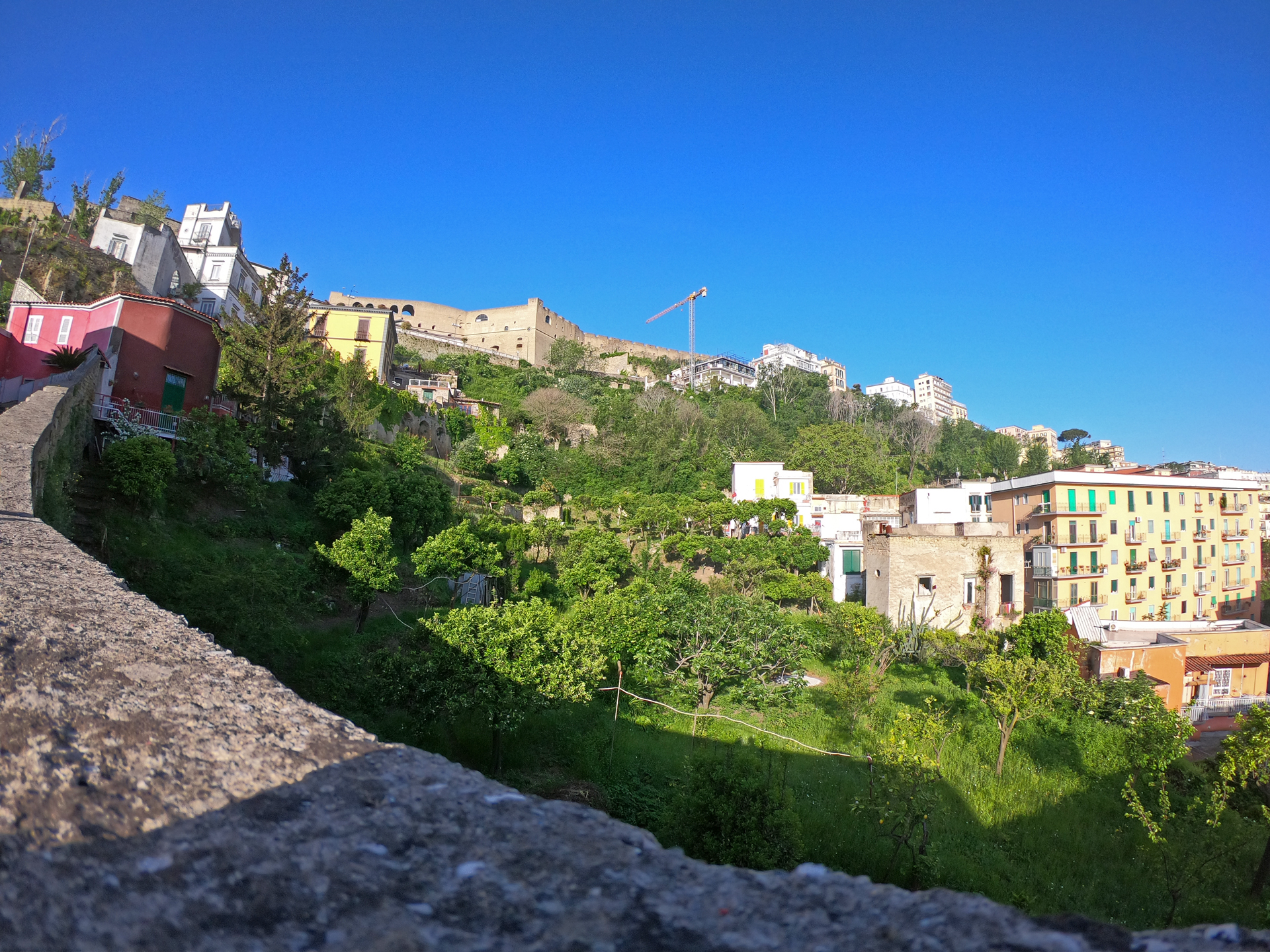
Urban biodiversity has long been one of the central themes of our activities and this particular spring, forcing us to stay the city, has given us the opportunity to explore a whole series of topics concerning city animals.
These undoubtedly include the importance that residual green areas have for birdlife (as well as for many other groups of animals).
Just as is often mentioned, with good reasons, the importance of urban parks and tree-lined roads, just as often we tend to forget the fundamental role played by “secondary” green areas for the city’s fauna.
These areas, and we have had yet another confirmation in our recent walks, are very important for migratory birds.
With residual or “secondary” urban green areas we consider all those small areas of cultivated and uncultivated areas that survived urbanization. It is precisely in these areas that we have found a large number of interesting species, in particular migratory ones.
This allows us to return to the story of our release on May 9th.
The Pedamentina, in fact, is characterized not only by landscape views of the highest quality but also by a mosaic of green areas, cultivated and non-cultivated, which make it one of the best areas for urban birdwatching in the city of Naples.
On our walk we were accompanied by our birdwatcher friend Marco D’Errico whom we thank for providing us with some of his splendid shots of the day.
The brief exploration of the area starts from the square of San Martino where we begin to compile the checklist with the most common species. After a while we walk towards what, last times, we had identified as the potentially most productive area in terms of bird sightings, a mosaic of gardens, orchards and uncultivated areas.
The first impression is that the migratory flow seems to be less intense than that of the previous days; we are in fact in the final phase of the spring migration.
Nonetheless, we immediately manage to contact a Garden Warbler (Sylvia borin), a species that does not end the migratory journey in Campania. This warbler, in fact, from central and southern Africa heads for its nesting range, which goes from the Alps to Scandinavia, passing from the northern Iberian Peninsula, to the Great Britain, up to central and northern Asia.
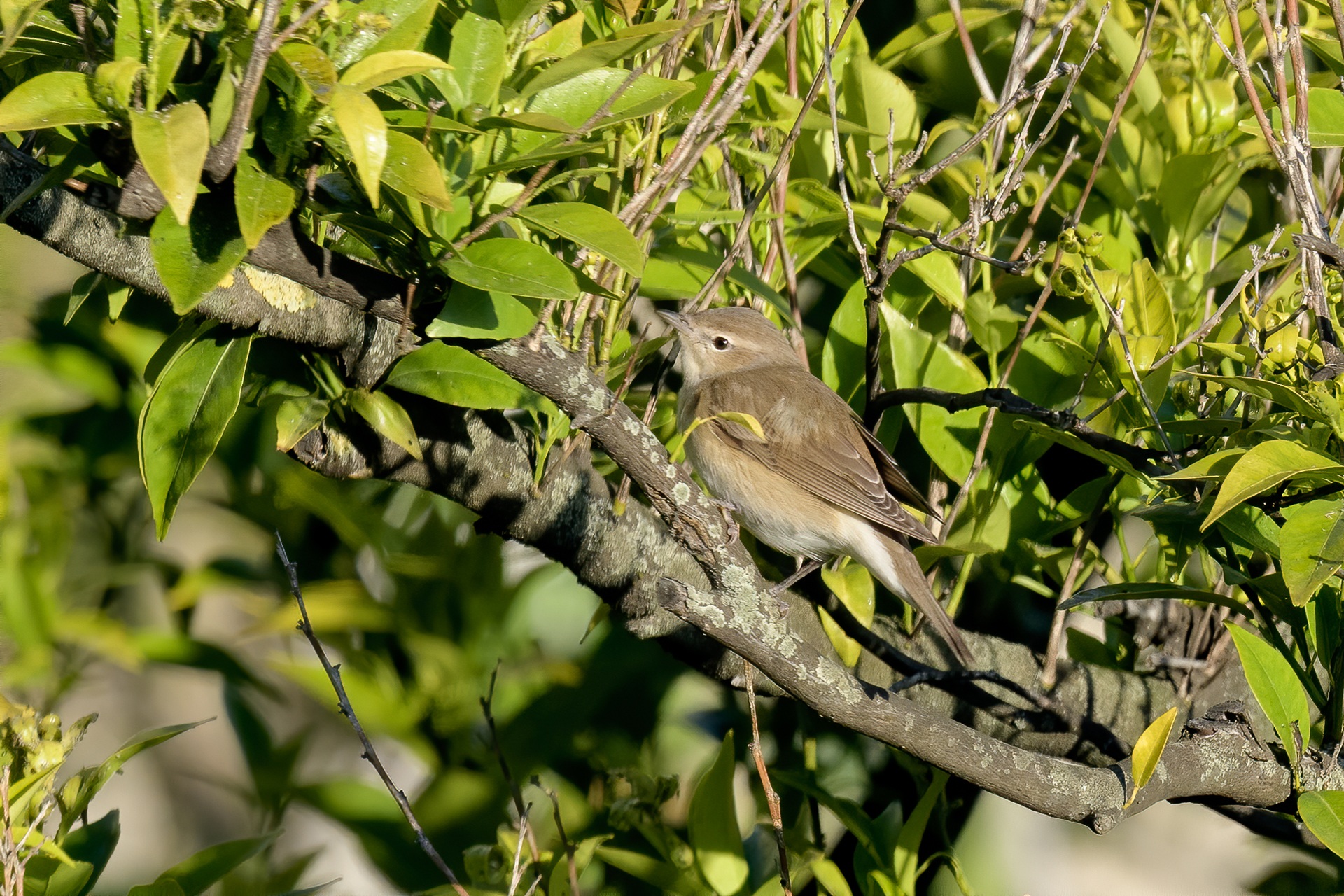
Another long-range migrant is the Spotted Flycatcher (Muscicapa striata) which during the course of the day we met in different areas of then Vomero district, and which immediately stands out with its characteristic flight. Unlike the Garden Warbler, this Muscicapidae also nests within the city of Naples. Trans-Saharan migrant, it has a very large European range, from the Mediterranean to Scandinavia, including Great Britain, as well as nesting in the Maghreb and central Asia.
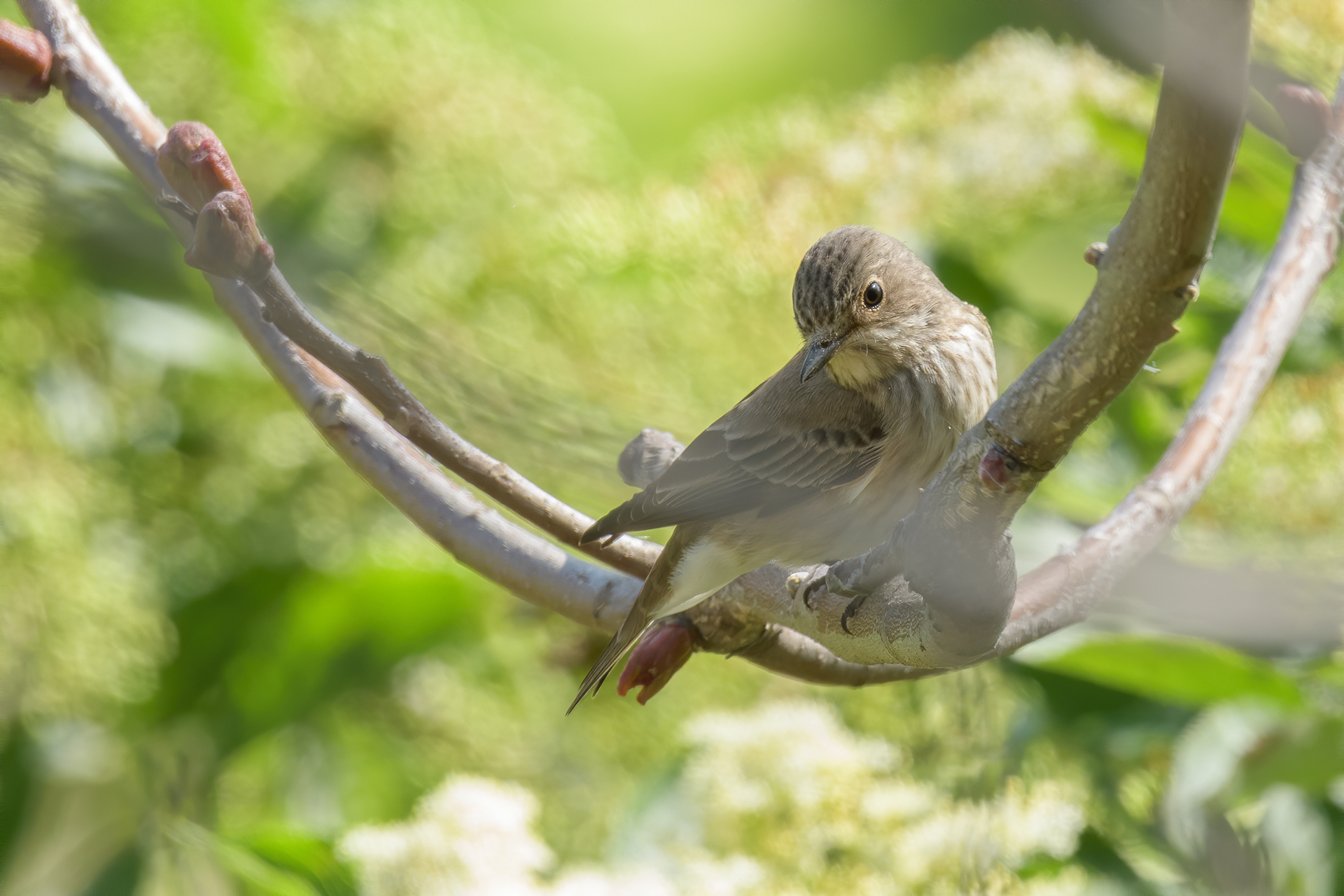
In this area, we also spot Barn Swallow, Great Tit, European Blue Tit, Hooded Crow and Western Jackdaw as well as a Common Kestrel (Falco tinnunculus) which perchs for a few minutes on a dry tree.
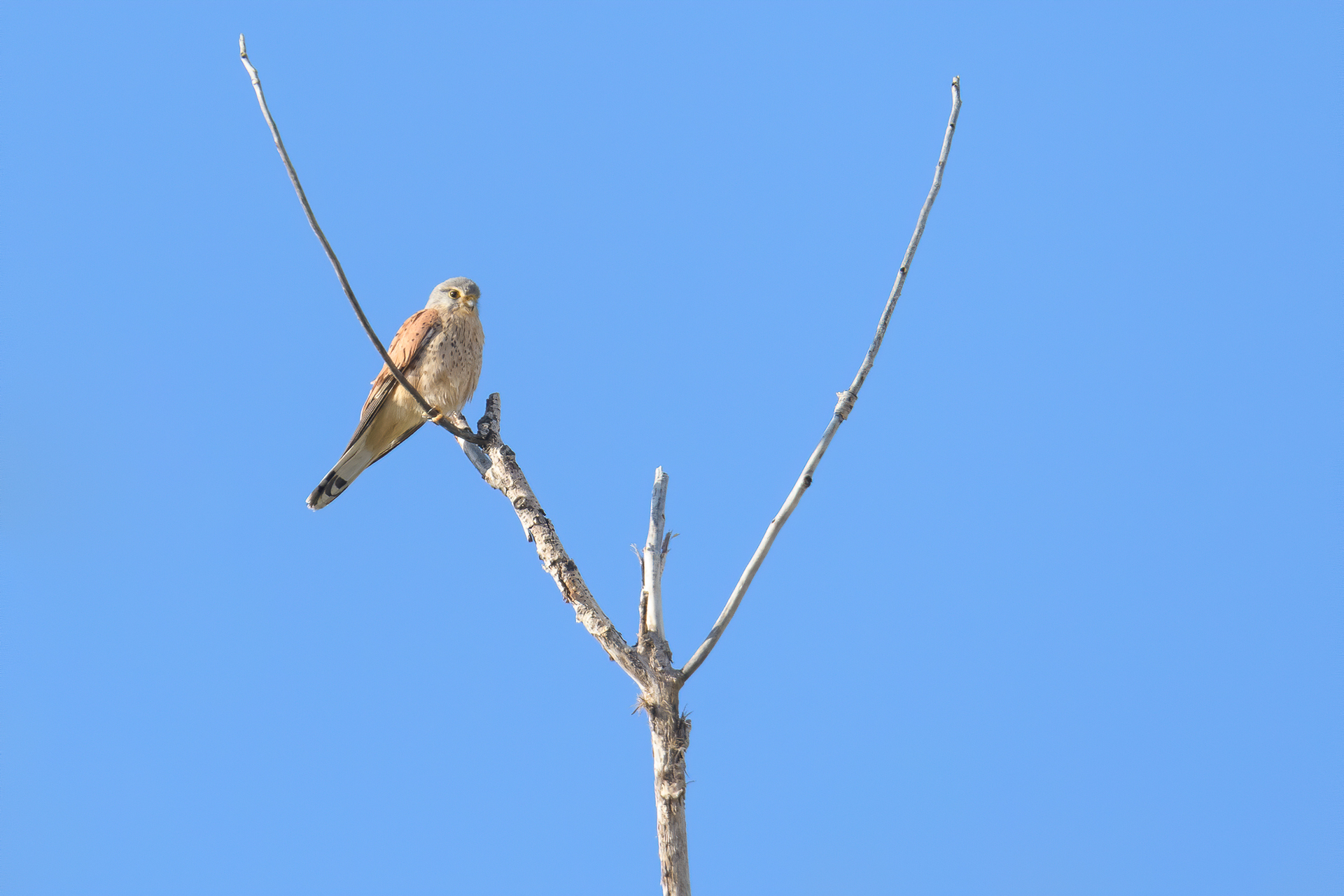
Not extremely satisfied from the first part of the morning we decide to go back to San Martino but before leaving a familiar sound attracts our attention: a dozen of European Bee-eaters (Merops apiaster) fly over our head! Unfortunately, they are too far away to be photographed properly.
This colorful species winters in western and central-southern Africa, then returns to the nesting districts located from the Iberian Peninsula, passing through central-southern Europe, up to the temperate areas of central Asia. It also presents a breeding population in South Africa, which spends the southern winter between Angola and Rwanda.
So we decide to walk up but here is that a Great Spotted Woodpecker (Dendrocopos major) settles on the same dry tree from where, a few seconds before, the kestrel observed us. This species is a habitual presence of the historic Villa Floridiana but we did not expect to be able to observe it on this less tree-lined hillside.
Back at the foot of Castel Sant’Elmo, a beautiful male Blue Rock Trush (Monticola solitarius) and a Spotted Flycatcher, intent on doing what his name suggests, lend themselves kindly as photographic models.
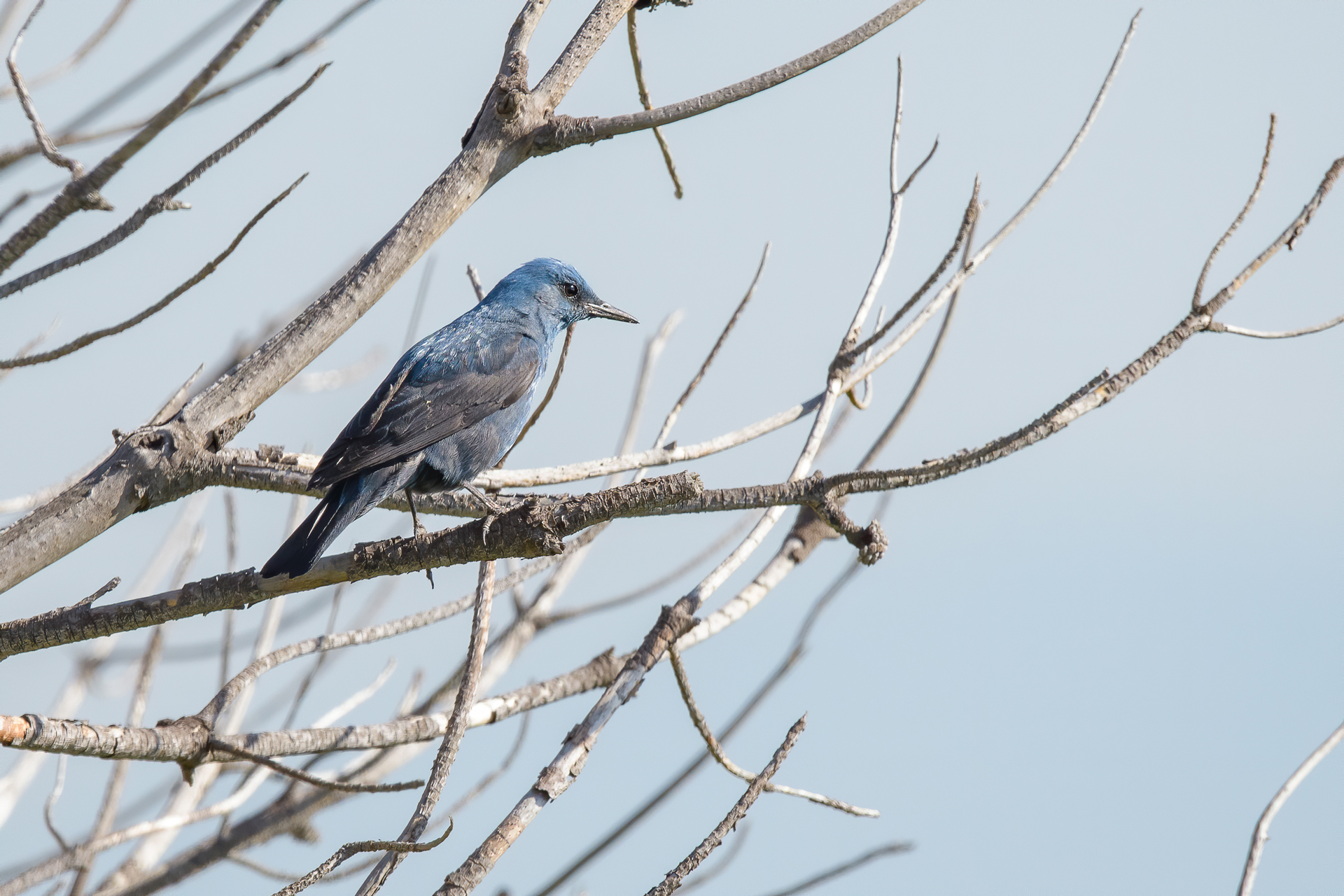
Not satisfied with the list of observed species we move to the opposite side of the Vomero hill, where we add to the list of sightings also a Eutopean Honey Buzzard (Pernis apivorus) hovering on a upward current and the Short-toed Treecreeper (Certhia brachydactyla), of which we listen to the song coming from the adjacent Floridiana.
Just as on the last occasion we managed to observe a good number of species once again and to spend a pleasant morning of this strange spring, paying homage at the same time to the migratory birds to whom we envy, in these periods more than ever, the freedom of travel around the world.
CHECKLIST
- European Honey Buzzard (Pernis apivorus)
- Common Kestrel (Falco tinnunculus)
- Yellow-legged Gull (Larus michahellis)
- Feral Pigeon (Columba livia var. domestica)
- Wood Pigeon (Columba palumbus)
- Common Swift (Apus apus)
- Alpine Swift (Tachymarptis melba)
- European Bee-eater (Merops apiaster)
- Great Spotted Woodpecker (Dendrocopos major)
- Barn Swallow (Hirundo rustica)
- Common Blackbird (Turdus merula)
- Blue Rock Thrush (Monticola solitarius)
- Garden Warbler (Sylvia borin)
- Blackcap (Sylvia atricapilla)
- Sardinian Warbler (Sylvia melanocephala)
- Spotted Flycatcher (Muscicapa striata)
- Great Tit (Parus major)
- European Blue Tit (Cyanistes caeruleus)
- Short-toed Treecreeper (Certhia brachydactyla)
- Common Magpie (Pica pica)
- Western Jackdaw (Corvus monedula)
- Hooded Crow (Corvus cornix)
- Italian Sparrow (Passer italiae)
- European Greenfinch (Chloris chloris)
- European Serin (Serinus serinus)
